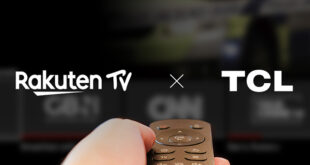High up on wish lists this past holiday season were ereaders and tablets. Indeed, at book retailing giant Barnes & Noble, its number one selling gift of the holiday season was the new NOOKcolor Reader’s Tablet. It, together with other similar devices on market, are seen to be injecting new life into the children’s publishing business; Barnes & Noble has already rolled out a dedicated Nook Kids section (and accompanying app) to tap into what is seen as a potentially lucrative new market.
It’s not just the kids’ publishing business that will benefit from these new devices in 2011; the children’s content business as a whole is knee-deep in figuring how best to bring brands to tablets, from downloadable TV shows to enhanced ebooks to games and more.
The potential of a new ancillary revenue stream comes at an opportune time for the kids’ business, which is coming off the back of a challenging year that saw some outfits—including TV-Loonland and Liberation Entertainment—succumbing to the difficulties of the market. The dwindling ad market of 2009 certainly put a dent in acquisitions and commissioning budgets last year, and not all companies came out unscathed.
But it wasn’t all doom and gloom. The global big guns—Disney, Nickelodeon and Cartoon Network—all found ways to expand their reach, either through new networks (such as Disney Junior, rolling out next month) or via program blocks. And even the independents were able to expand, with JimJam, KidsCo and CBeebies all increasing their distribution throughout the year. 2010 also saw the debut of The Hub, the joint venture between Hasbro and Discovery Communications. Although the channel is taking a slate of content from its sister outfit Hasbro Studios, it has been buying a fair bit from the international market—welcome news for distributors struggling to crack the tough U.S. landscape.
Last year was also a good one for animation producers in several Asian territories, whose ability to deliver high-quality work for hire on a budget was a boon for North American and Western producers dealing with contracting budgets. Singapore, Malaysia and India have all emerged as major forces in the global animation business, joining Korea and Japan, while outfits in the Middle East are certainly waiting in the wings, bolstered by such initiatives as Cartoon Network’s alliance with twofour54 to support budding local animators. Asian animation houses are also benefiting from the fact that the global kids’ brands have reached a level of maturity in the region that requires some localized programming initiatives, a trend that will undoubtedly continue in 2011.
Latin American outfits, meanwhile, found tremendous demand in 2010 for teen telenovelas—part of an overall appetite across the industry for live-action youth content. Another part of the tween live-action space that saw a fair bit of activity in 2010 was formats—the Canadian-originated Prank Patrol was successfully adapted in Australia, while Artzooka!, also from Canada, is being formatted in a number of territories, and House of Anubis, from Belgium, is heading to Nickelodeon U.S. For broadcasters in need of hit programming with a local flavor, kids’ formats may prove to be in high demand in 2011.
Risk-averse networks also turned to brands with built-in equity in 2010; Nickelodeon signed up for an all-new Power Rangers, as well as the established global hit Winx Club; Cartoon Network signed up for a series based on the hit movie How to Train Your Dragon; and Disney XD gave the greenlight to a show based on Tron. Other well-known brands that have been, or are being, updated include Voltron, Maya the Bee, The Cat in the Hat, Peter Pan and Le Petit Prince.
A topic that began to gain traction towards the end of the year was stereoscopic 3D animation, with numerous outfits rushing to display their capabilities with the technology. However, unlike channels in the factual, movie and sports arena, kids’ networks have, thus far, stayed away from the 3D factor; for now, at least, 3D fare for kids looks like it will be limited to the movie theater.
This year, will, however, definitely see continued efforts by brand owners to get their properties to young ones in every way possible. Rainbow spent 2010 working on an amusement park that opens this year, Studio100 acquired one in Germany and Nickelodeon teamed with a British theme park for an attraction based on its brands and has partnered with Norwegian Cruise Line.
The good news is that kids are still watching TV, a lot of it. A report released by the Kaiser Family Foundation in 2010 found that 8- to 18-year-olds in the U.S. devote an average of 7 hours and 38 minutes to using entertainment media in a typical day, stacking up to more than 53 hours per week. The level of daily media usage is up from 6 hours and 21 minutes in 2004. An interesting finding in Kaiser’s research was that the amount of time spent watching regularly-scheduled TV declined by 25 minutes a day from 2004 to 2009. However, thanks to the Internet, cell phones and iPods, total TV consumption rose from 3 hours and 51 minutes to 4 hours and 29 minutes per day. At the time of Kaiser’s research, the iPad had not yet been released to the market.
Figuring out how best to utilize that device, and others, will certainly be top of mind for content owners this year. Fortunately, the traditional, linear TV market is well into recovery mode, and buyers appear to be keen to open up their checkbooks for new commissions and acquisitions. And companies will certainly be using the lessons of last year—of learning to deliver high-quality shows on a budget, utilizing the skills of co-production partners across the globe—to meet broadcasters’ needs.
You can keep up to date on all that’s making news in the kids’ business on our recently launched website TVKids.ws.
